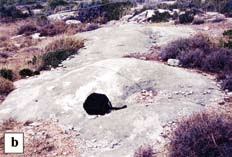Karst Surface Features of the Hard Laminated Crust (Caliche Hardpan) in the Mersin Area, Southern Turkey
DOI:
https://doi.org/10.3986/ac.v39i1.115Povzetek
The study area is located in the Mersin province where caliches are widespread and occur in a variety of forms such as powdery, nodular, tubular, fracture-infill, laminar crust, hard laminated crust (caliche hardpan), pisolithic crust. The hard laminated crust shows distinctive karst surface features of karren. These include kamenitza, rillenkarren, solution pit and solution enlarged fracture (kluftkarren). First two karst features are common and closely associated with dome- and ridge-like morphologies termed caliche tepees or pseudo-anticlines. Kamenitzas or solution basins are dish-shaped depressions with flat bottom and sharp and overhanging sides which resulted from ponding water mostly at the top of caliche tepees. Rillenkarren are solutional flutes separated by sharp angular ridges, with length of less than 15 cm. They are well developed on the inclined surfaces of surface irregularities at or near the top of caliche tepees and form from sheet flow. Solution pits are narrow, cylindrical shaped karst troughs formed by stemflow drainage beneath trees. The kluftkarrens are products of dissolution by channelised surface water flowing along a fracture. The coexistence of caliche and karst features is important to indicate a climatic change from semiarid to humid conditions.
Prenosi

Prenosi
Objavljeno
Kako citirati
Številka
Rubrike
Licenca
Avtorji jamčijo, da je delo njihova avtorska stvaritev, da v njem niso kršene avtorske pravice tretjih oseb ali kake druge pravice. V primeru zahtevkov tretjih oseb se avtorji zavezujejo, da bodo varovali interese založnika ter da bodo povrnili morebitno škodo.
Podrobneje v rubriki: Prispevki




